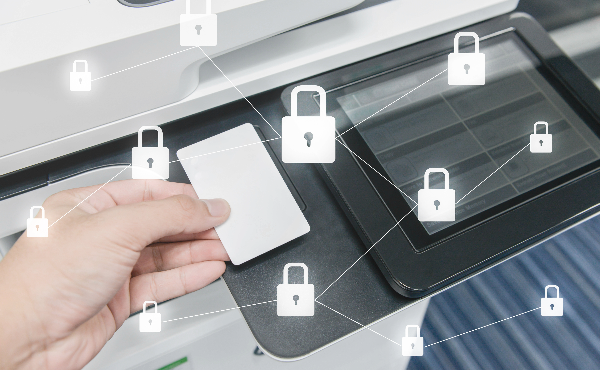
Multifunction Printers, or MFPs, are one of many key devices in offices worldwide that provide many benefits to companies, however, they also can be major security risks if not properly protected. Cybercriminals and hackers are always on the lookout for vulnerabilities to attempt to exploit which makes it important to understand their means of attack and employ the best defense possible to reduce the risks. Below is a list of common vulnerabilities present in MFPs and best practices on how to avoid them being exploited.
Default Passwords
A very common vulnerability is default passwords. Many devices, including MFPs, come with preset usernames and passwords that are very simple to guess or crack, and are also potentially documented online. If the default username and password are not changed, anyone would be able to access your device with these credentials and gain access to printer settings which includes secure information such as network configurations and print queues. There are a couple of ways to defend against this vulnerability, with the easiest being to change the default password to a strong and unique one. A good way to do this is to use a mix of upper and lowercase letters, numbers, symbols, and use a longer password. Another way to reduce the risk of this vulnerability is to configure the devices with Active Directory user authentication, which makes them a trusted network device and allows for better control over who can access the MFP.
Unsecured Network Connections
MFPs can function as a network terminal due to their powerful productivity features, which enables them to be targeted by Denial-of-Service (DOS) attacks, phishing attempts, malware, and other forms of cyberattacks. If the network the device is on is not secure, cybercriminals and anyone else could possibly access data stored on devices in the network. Data that’s even stored in the hard disk drive of the MFP could be accessed or stolen if it’s not protected. The best way to defend against hackers attempting to exploit this vulnerability is by ensuring that a secure connection is always used when connecting a MFP to your network. Other ways you can protect against this vulnerability would be to implement a firewall, which restricts access to the printer, and add more layers of protection such as Bitdefender antivirus protection software, which discovers and blocks malware that may have been installed on the device.
Outdated Firmware
Firmware, in short, is software that controls hardware. Firmware updates are released by manufacturers of many different hardware devices with the goal of fixing potential bugs and patching security vulnerabilities. MFPs, like any other device, receive firmware updates all the time, and neglecting to install these updates exposes your devices to attacks that would otherwise be taken care of. In order to prevent attacks like this from occurring, it’s important to make a habit of checking for firmware updates on a regular basis and installing them as soon as they’re available. Some devices, such as the Sharp BP Series MFPs automatically check for abnormal firmware and restore its original settings from back up if any is found.
Unsecured Print Jobs
Securing print jobs should be standard for all printer users, especially for all print jobs containing sensitive personal information. Unsecured print jobs allow for anyone on the network to potentially access them, including cybercriminals and hackers that have gained access to your network. The best way to avoid this is by enabling secure printing features such as user PIN codes, ID badges, and encryption that authenticate users before printing. You can also use Near Field Communication (NFC) Printing or Synapx Go to wirelessly print from a mobile device to an MFP. Learn more here.
Remote Access
Remote access is certainly a very convenient feature of MFPs, however, it also is another area of risk and could be a vulnerability if access points are left unsecured. A couple of great ways to secure remote access to MFPs is by using either VPNs (Virtual Private Networks), or SSL connections when accessing the device remotely. Your IT team can also monitor, manage, and configure MFPs through Remote Device Management or Mobile Device Management. Sharp Remote Device Management (SRDM) allows administrators to take control of features, create security policies, and reset security settings to the defined security policy when changes are detected.
Cybercriminals and hackers know that MFPs and other printing devices are often overlooked when it comes to security, and they use them as a gateway for accessing your network and any data stored within it. Understanding printer vulnerabilities and how you can protect against them ensures that your printers are secure, and your data and network is protected.
See if you’re best-in-class or falling behind with this Aberdeen-driven assessment that shows you how your organization compares to others with print and cyber security.
Source: Sharp